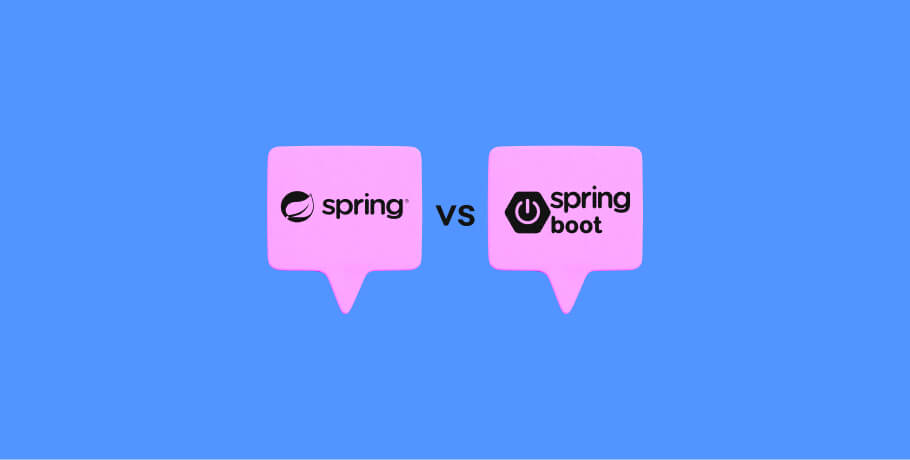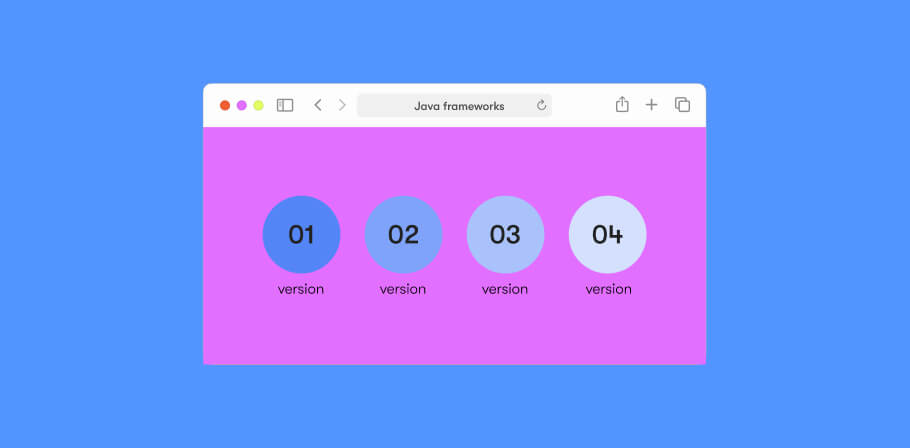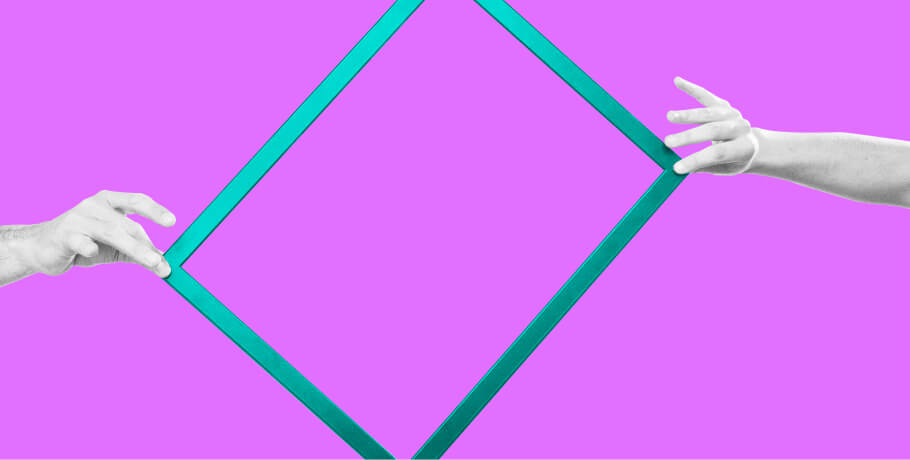It’s been nearly two decades since developers worldwide have been disputing the difference between Java EE and Spring. Twenty years ago, Spring was the dominant option for its lightness and simplicity. However, Java EE constantly evolved and became the industry standard used by global companies.
In this article, we will determine whether Java EE or Spring is better by reviewing their speed, performance, scalability, architecture, and applicability. Let’s find out the current situation.
Brief overview of Java EE: fresh features and updates
Java Platform, Enterprise Edition is a set of specifications wrapped around Java SE (Standard Edition). It’s a more advanced version that provides features like distributed computing and web services. The platform is known under different names, like J2EE and Jakarta EE.
As stated on Oracle’s website, Java EE continues to improve API and programming models required for modern software and creates features requested by its community. Some include asynchronous CDI events, enhanced JSON support, a new REST Reactive Client API, and many others. All current features are available in the tech’s documentation.
According to Web Tech Survey, Java EE is positioned as the #3 programming language on the global market. There were a total of 666,384 websites using this technology in 2024, with 285,974 of them being in the United States.
Advantages
Java EE comes with multiple advantages:
- Strong reliability, scalability, and security;
- Can be applied to multiple platforms;
- Supports cross-platform portability;
- Works with complex high-level systems;
- It’s easy to learn for those working with J2SE.
Disadvantages
Some major disadvantages of Java EE include:
- Requires larger investments for development, deployment, maintenance, and management;
- The application development environment is extremely complex;
- Doesn’t have built-in support for web services standards;
- Requires deep learning due to the excess amount of specifications.
Brief overview of Spring: still relevant in 2024?
Spring is an open-source framework for Java EE created to simplify the development of Java-based applications. Its core feature is to provide the capabilities for developing any software, even enterprise-class solutions.
Currently, the Spring framework supports:
- Microservices;
- Reactive, cloud, and serverless solutions;
- Event-driven software;
- Web applications;
- Automated tasks.
Various sources indicate that Spring has been among the ten most used Java frameworks for the last few years. According to Web Tech Survey, 15,973 live websites used this technology in 2024, with 4,884 located in Poland.
Advantages
Continuing the discussion covering Java EE vs Spring framework, some advantages of the latter are:
- Utilizes POJO (plain old Java object), making it lightweight;
- Flexibility due to the possibility to choose XML or Java-based annotations;
- Abstraction to JEE specifications like JPA and JTA;
- Good security due to the close monitoring of third-party dependencies.
Disadvantages
Some disadvantages of Spring include:
- Hard to learn because it requires strong knowledge of core Java;
- Uses a lot of XML;
- Provides multiple options to developers, often confusing, as it’s hard to pick the best.
Java EE and Spring differences in performance and speed
Comparing Spring and JEE in speed and performance is challenging as the former is a framework, and the latter is a specification. However, the Spring framework simplifies the creation of software based on the Java EE platform. That’s why you must think of these two options as complementary elements.
Rates and pool of talents of Spring and Java EE
Another topic for discussion in the Spring Boot vs Java EE dispute is the difference between the rates and numbers of experts. We have researched multiple sources to provide a general estimate of the market.
Java EE
Reports from 2019 state that there were 9 million developers all around the globe. Various ratings from different years mention Java as one of the most in-demand programming languages. It is used in all kinds of projects, from simple software to enterprise-level solutions.
According to Glassdoor, the average salary of a senior Java developer in the United States is $110,975 per year. The same position in Ukraine would receive an average pay of $29,271 per year.
Spring
The JVM Ecosystem Report for 2020 states that 50% of Java developers use Spring in their projects, allowing us to assume that the number of programmers with this tech stack would be near 4.5 million. Simultaneously, Spring is frequently listed among the best Java frameworks for various solutions.
According to Glassdoor, the average salary of a senior Spring developer in the United States is $124,492 per year. The same position in Canada would receive an average pay of $61,346 per year, while in the United Kingdom, this would be $66,241. Eastern Europe would offer lower rates.
Scalability and updates of Java EE and Spring
Now, let’s look at the comparison between J2EE and Spring in terms of the latest features and scalability. Note that the newest versions are up-to-date as of 2023.
Java EE
Java 21 is the latest version released in September 2023. Developers can download the Java Development Kit on Oracle’s website, additionally getting access to the older versions of the technology.
Some of the most important additions include:
- Structured concurrency;
- Record patterns;
- Preview of a foreign function and memory API;
- Virtual threads;
- Pattern matching for switch expressions and statements;
- Vector API;
- Linux/RISC-V port.
Considering Java EE’s scalability, it can be scaled vertically on a single system and horizontally across multiple systems. You can add more resources to your servers, like RAM or disk space, and scale out to add more machines or server nodes to work in unison. It depends on your needs.
Spring
Spring 6.1.x is the latest version that was released in November 2023. You can download the Spring framework on the official website. That’s where you can also get other products like Spring Boot, Spring Cloud, Spring Data, Spring Security, Spring for GraphQL, and others.
The current version includes multiple bug fixes and the following features:
- Serializable WebClientException;
- Exposing headers from the STOMP RECEIPT frame to registered callbacks;
- Deprecate NestedIOException;
- CreateContext() factory method in AbstractGenericWebContextLoader, and others.
You can find a full list of updates here. Spring is nearly as scalable as Java EE, as this is a framework built on top of the specification. It supports both horizontal and vertical scaling models.
Spring vs JEE: security
So, let’s move on to the next stage of our Spring vs Java EE review — covering security. We’ll discuss the most interesting options.
Java EE
In Java EE, web services and applications are made up of multiple components that can be set in different containers. These containers are responsible for security.
There are two types of security:
- Declarative security — the application’s security mechanism is declared and handled externally by the application. It consists of application-level security and component-level security.
- Programmatic security — an embedded solution is used when declarative security alone is not enough to build the required security model.
The specification supports a vast must-have security features like authentication, authorization, data integrity, and transport security. It also runs using a virtual machine, adding one more layer of protection.
Spring
The framework uses another product called “Spring Security” as its highly-customizable authentication and access-control framework. The greatest difference between Java Spring and Java EE is the ease at which all the security measures are implemented.
Some of the features include:
- Protection against session fixation, clickjacking, and other attacks;
- Spring Web MVC integration;
- Servlet API integration;
- JAAS login module;
- Basic and digest access authentication, and more.
It is safe to say that both options are quite equal due to their complementary nature.
Architecture differences between Java EE and Spring
It’s time now to check out the architectural difference between Spring and J2EE.
Java EE
Java EE follows the three-tier architecture model. Each tier is different:
- The user interface focuses on UX and stability.
- The main business logic of the software.
- Databases and data.
Spring
Spring follows a layered architecture that consists of about 20 modules. Each comes with different features, and it isn’t necessary to utilize all of them.
Spring vs Java EE comparison table
While there are dozens of areas to cover in this Spring vs JEE comparison, we’ve gathered the main notions in a single sheet. This should help you understand the key differences in each area.
The basis of comparison | Java EE | Spring |
Description | An Oracle standard & specification | A framework made for Java EE |
Use | Web development | Template design for software |
License | Oracle-based license | Open-source license |
Architecture | Three-dimensional | Layered based on modules |
Speed | Faster than Spring | Slower than Java EE |
Language | High-level object-oriented programming language | No certain programming language |
Salaries | Average salary in the US is $110,975 | Average salary in the US is $124,492 |
When to choose Java EE?
Java EE is excellent for developing web and enterprise software, websites, and EJB applications. This technology supports a high level of scalability, allowing you to grow quickly from a simple MVP to a full-fledged solution. It doesn’t depend on platforms and can be launched anywhere.
So, you can choose Java EE to:
- Start with an MVP that will constantly grow;
- Develop a complex solution utilizing all kinds of frameworks and libraries;
- Create a multiplatform app that works everywhere.
Examples of some popular apps using Java are Spotify, X.com, Signal, and others. You get nearly unlimited possibilities when working with this language.
When to choose Spring?
Spring is an additional Java EE tool, simplifying the development process and making it more lightweight. The framework provides multiple templates and utilizes dependency injection, simplifying the testing process.
Continuing the Spring vs Java EE dispute, you can use Spring to:
- Develop microservices;
- Create serverless applications;
- Utilize batch processing, and more.
Netflix and Blablacar are among the most well-known companies using Spring Framework. It is a nice choice if you want to simplify things.
FAQ

The EPAM Anywhere Editorial Team is an international collective of senior software engineers, managers and communications professionals who create, review and share their insights on technology, career, remote work, and the daily life here at Anywhere.
The EPAM Anywhere Editorial Team is an international collective of senior software engineers, managers and communications professionals who create, review and share their insights on technology, career, remote work, and the daily life here at Anywhere.
Explore our Editorial Policy to learn more about our standards for content creation.
read more


















